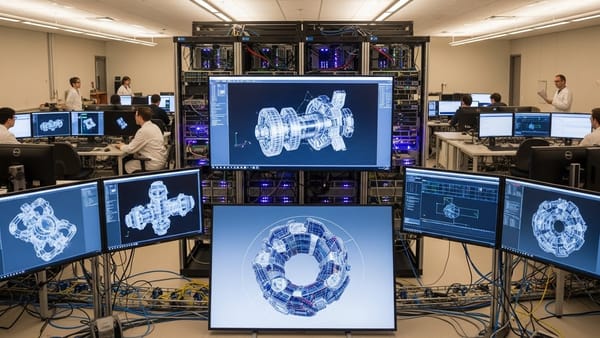OpenAI On the Road to Trillion-Dollar Spending: OpenAI partners with Oracle, Nvidia, Softbank, and more to build out 20 gigawatts of data center capacity
A flurry of announcements brought into sharper focus OpenAI’s plans to build what may amount to trillions of dollars of global computing capacity.

A flurry of announcements brought into sharper focus OpenAI’s plans to build what may amount to trillions of dollars of global computing capacity.
What’s new: OpenAI, Oracle, and SoftBank, the primary partners in the massive data-center buildout called Stargate, announced 5 new sites in the United States that entail $400 billion in spending in addition to its prior commitments. In addition, OpenAI introduced Stargate UK, a partnership with Nvidia and the Norwegian data-center builder Nscale that will build AI infrastructure in England. All told, OpenAI’s current plans will cost $1 trillion, The Wall Street Journal reported.
How it works: OpenAI forecasts demand for data centers in terms of electrical power they will consume. Each 1-gigawatt increment of capacity (roughly enough to light 100 million LED bulbs) costs around $50 billion to build. The company’s current plans amount to 20 gigawatts worldwide, and it predicts demand as high as 100 gigawatts, according to one executive. To satisfy that level of demand would bring the total outlay to $5 trillion (roughly the gross domestic product of Germany).
- OpenAI will build 1.5 gigawatts of new capacity in Ohio (piggybacking on a previous SoftBank project) and Texas over the coming 18 months. This capacity adds to 5.5 gigawatts in New Mexico, a different site in Texas, and an unnamed location in the Midwest. These newly announced facilities complement a 1.2-gigawatt set of eight data centers in Abilene, Texas, two of which are up and running. Oracle will oversee construction, and Oracle and Softbank will provide financing.
- The UK project calls for multiple sites, starting with Cobalt Park near Newcastle, that will enable OpenAI to supply computing power for finance, national security, and other applications that need to be processed domestically. Nvidia will supply GPUs that may amount to 8,000 early next year and as many as 31,000 afterward.
- Separate from the Stargate announcements, Nvidia pledged to invest $100 billion in OpenAI, following a recent $40 billion infusion from SoftBank, Microsoft, and others as well as an earlier $13 billion from Microsoft. Nvidia provided the first $10 billion at a valuation of $500 billion, raising its stake in OpenAI by roughly 2 percent after an undisclosed investment last year. The outlay is likely to return to Nvidia directly in the form of sales or leases of chips, The Information reported
Behind the news: Stargate, a partnership between OpenAI, Oracle, and SoftBank to build 20 data centers over four years at a cost of $500 billion, began in January. That plan is proceeding ahead of schedule and has expanded considerably.
- With the latest announcements, the initial commitment is more than 80 percent underway.
- Stargate includes further 1-gigawatt initiatives in India and the United Arab Emirates, with more countries under consideration.
- OpenAI’s arrangement with Oracle includes a commitment to pay the latter $30 billion annually for computing services.
Yes, but: Some analysts worry that giant infrastructure commitments by big AI companies could jeopardize their financial health if demand for AI doesn’t keep pace. “Someone is going to lose a phenomenal amount of money,” OpenAI CEO Sam Altman told The Verge, adding that winners will gain even more.
Why it matters: Big AI’s capital spending continues to rise. In addition to Stargate, Alphabet, Amazon, Meta, and Microsoft together plan to spend more than $325 billion this year on data centers, with much more to come. This outsized effort brings with it outsized risks: Companies are betting their balance sheets, investors are putting money on the line, governments are hoping that data centers will supercharge their economies, energy providers are scrambling to provide sufficient electricity, and communities are balancing potential prosperity versus environmental hazard. The optimistic view sees AI’s value rising, costs falling, social benefits spreading, and energy use declining as AI models produce higher-quality output with greater efficiency.
We’re thinking: $5 trillion spent on AI infrastructure is more than 10 times OpenAI’s latest valuation. But the company’s valuation has increased by more than 20 times since it launched ChatGPT in 2022. So far, its bets are paying off.




